► Mid-mounted Audi five-pot
► 493bhp, as little as 1090kg dry
► KTM’s GT2 racer with number plates
If you like motorbikes or slightly offbeat trackday specials, you’ve probably heard of KTM. The Austrian firm made its name with the former before bursting on to the latter scene in the late 2000s with its carbon-tubbed, mid-engined two seat sports car, the X-Bow (read crossbow).
After over a decade of evolution, the KTM X-Bow GT-XR is the current pinnacle of the brand’s road-going four-wheelers. It follows a familiar recipe with a definite track focus, lashings of beautifully crafted carbon and a transverse Audi motor with DSG ‘box behind you. After all, this is basically KTM’s race winning GT2 car with number plates and EU type approval.
However, unlike previous road-going X-Bows you won’t find a 2.0-litre four-cylinder turbo lump. Instead, KTM has passed on the latest version of the EA888 slotted into the nose of the S3 and instead settled on the 2.5-litre five-pot in the RS3, only tweaked to deliver 493bhp.
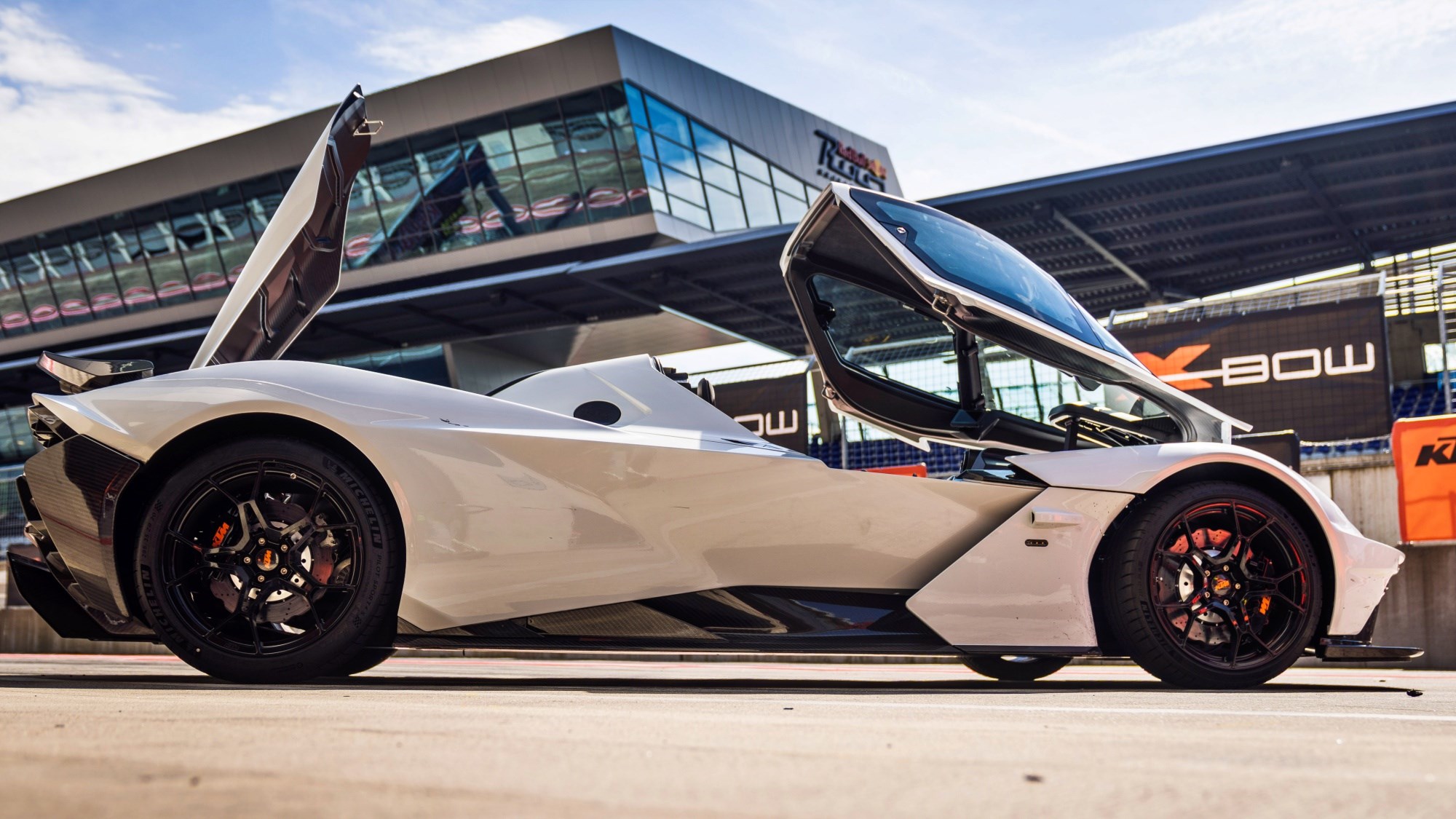
Oh, and even fully fuelled and ready to go with a driver on board, the GT-XR weighs 1250kg or 1210kg with a few lightweight trinkets such as a lithium battery and carbon brakes. Not bad considering the petrol tank swallows 96 litres…
Isn’t that a lot?
Oh yes. There are two reasons for the gargantuan tank. The first is to ensure you’re not running to a filling station every few laps on a trackday (or endurance race), the other is to give a simply staggering touring range of over 600 miles if you’re careful.
The big tank helps, but the combination of light weight and modern Audi motor with seven-speed dual clutch gearbox means an official WLTP certified fuel economy figure of 31mpg and CO2 emissions of just 214g/km. Those are exceptionally good figures for something with a claimed 0-62mph time of 3.4 seconds.
Can I take it on a touring holiday?
Technically, yes. There’s a surprisingly large 160 litre luggage compartment under the engine cover that happily takes a couple of squishy bags or a helmet and overalls, and a smaller compartment for your documents and chocolate supplies between the seats. You certainly don’t want to load the boot up with Boosts or Kit Kats; it gets warm enough to be used as Just Eat’s fastest ever delivery vehicle.
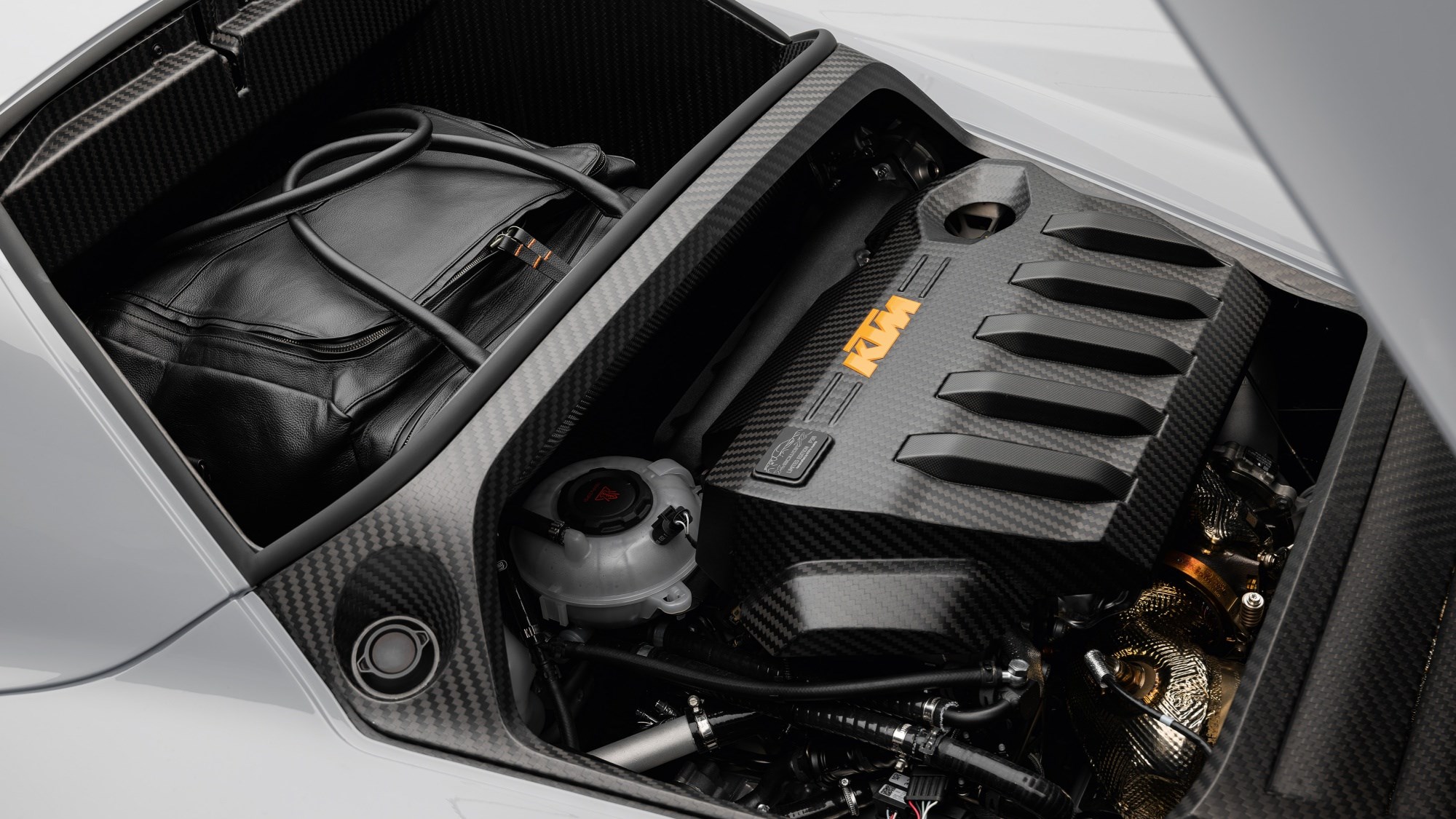
You won’t find any cupholders, armrests, supple materials or any other signs of luxury, though. However we’ve no issues looking at the acres of exposed carbon fibre, the climate control works well enough on a warm day, and there’s even a four-speaker stereo with a subwoofer, too.
There’s no touchscreen infotainment system fitted – KTM says it’d add weight, complexity and be out of date in a couple of years anyway – so instead you get a smartphone mount with wireless charging and a Bluetooth connection. Other controls are handled by rubberised buttons on the F1-style steering wheel with its clear, configurable digital display, and a touch panel between the seats that can still be operated by gloved hands.
So, it’s sort of practical?
Calling it practical is perhaps a stretch as just getting into the GT-XR requires some athleticism. With the super-stiff carbon monocoque around knee height, KTM opted for a fold-forward canopy that will either remind you of a jet fighter or the Nova kit car depending on your age and anorak level.
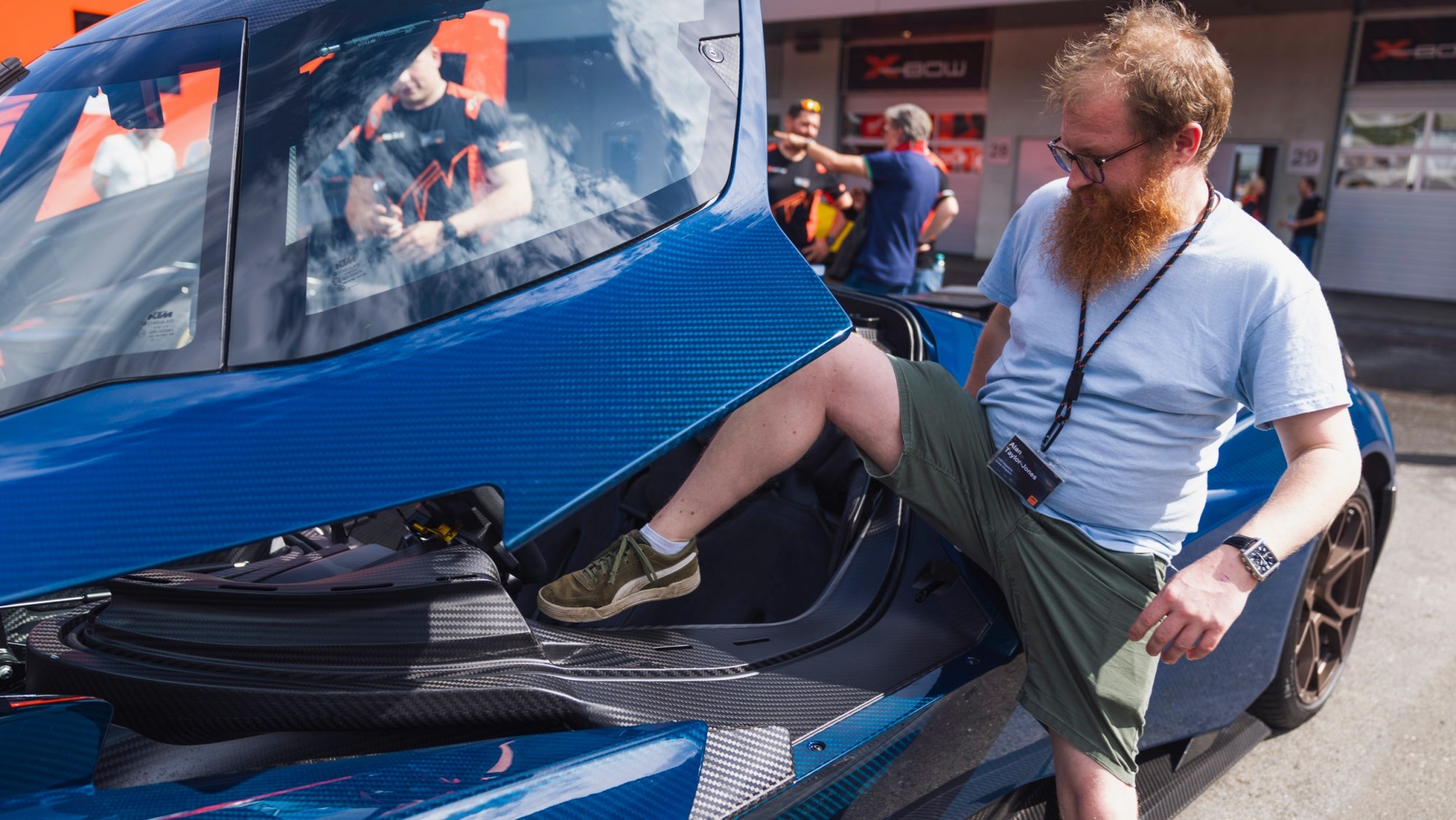
There’s no diginified way of getting in and out, especially if you’re tall. This diminutive writer stuck with the recommended method of sitting on the wide sill then swinging over legs one at a time. Being careful not to whack your head on the canopy, something other journos complained of, it was then a case of lowering yourself into the fixed bucket seat before adjusting the pedal box and steering wheel.
Once inside you’re faced with decent legroom and a ludicrous amount of headroom – apparently the tallest driver they’ve had was 6’ 10” so wearing a helmet is unlikely to be an issue for anyone. You do find yourself sitting awfully close to your passenger, though.
Is it worth the effort?
So long as your final destination is a track, we’d say yes. Thumb the familiar Audi starter button and the RS3’s transplanted heart fires noisily into life, idling noisily and producing more vibrations than a brace of Hitachi Wands. Thank a steel engine cradle bolted directly to the carbon fibre speaker box you’re sitting in for that.
Once you’ve got the four-point harness fastened, you can grasp the knurled aluminium gearlever to select drive before pressing the electric handbrake button for what seems like ever before it releases.
At this point something strange happens. After the barrage of NVH you’ve just experienced the DSG box gently engages first and the engine smooths out significantly as revs rise. The motor might be tweaked but this powertrain is just as tractable as an RS3, handy when visibility is decidedly sub-optimal.
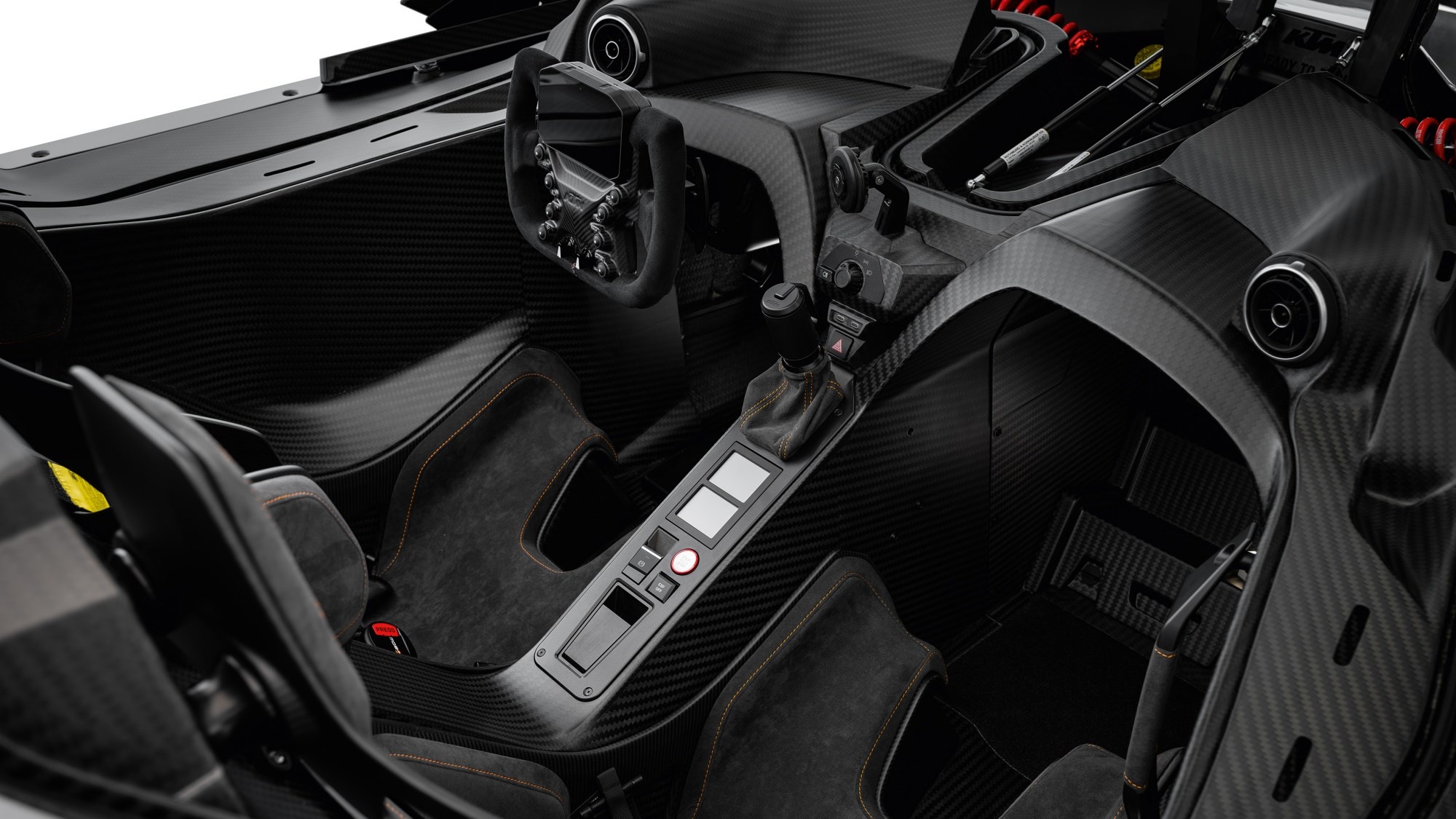
Admittedly three inches of extra height would make all of the difference – a thicker foam pad is available for the seat – but as it stands I can’t even see the top of the front wings from my vantage point, not ideal when you’re threading through a paddock filled with Formula 4 racers and their suicidal support crew on E-scooters and quads.
Thankfully I soon realise that you can line up the base of the wiper with the right-hand white line to centralise the car perfectly on the narrow Austrian roads we find ourselves on. A quick glance at the low-mounted camera mirrors (one on each side, a rear facing one and another for reverse parking) confirms this approach is working very well.
The three-way adjustable SACHS coilovers have clearly been set up with circuit driving in mind, but only over particularly sharp potholes and ridges do you get a real thump through your spine. Avoid these and the tightly controlled damping stops the hard ride becoming irritating. Given the race-spec suspension with bush-free joints, it’s impressive although this and the barrage of road and wind noise mean you’ll need serious commitment and possibly ear defenders for a trans-European trim
Yawn. give it some beans!
Opening the taps reveals a slightly lazy throttle response at lower revs but more than enough shove to keep pace with traffic. Keep your foot on it and boost builds noticeably as you approach 3000rpm before it pulls hard to the 7000rpm limiter. For reference, the 429Ib ft of torque comes in at 5500rpm while peak power is at 6350rpm.
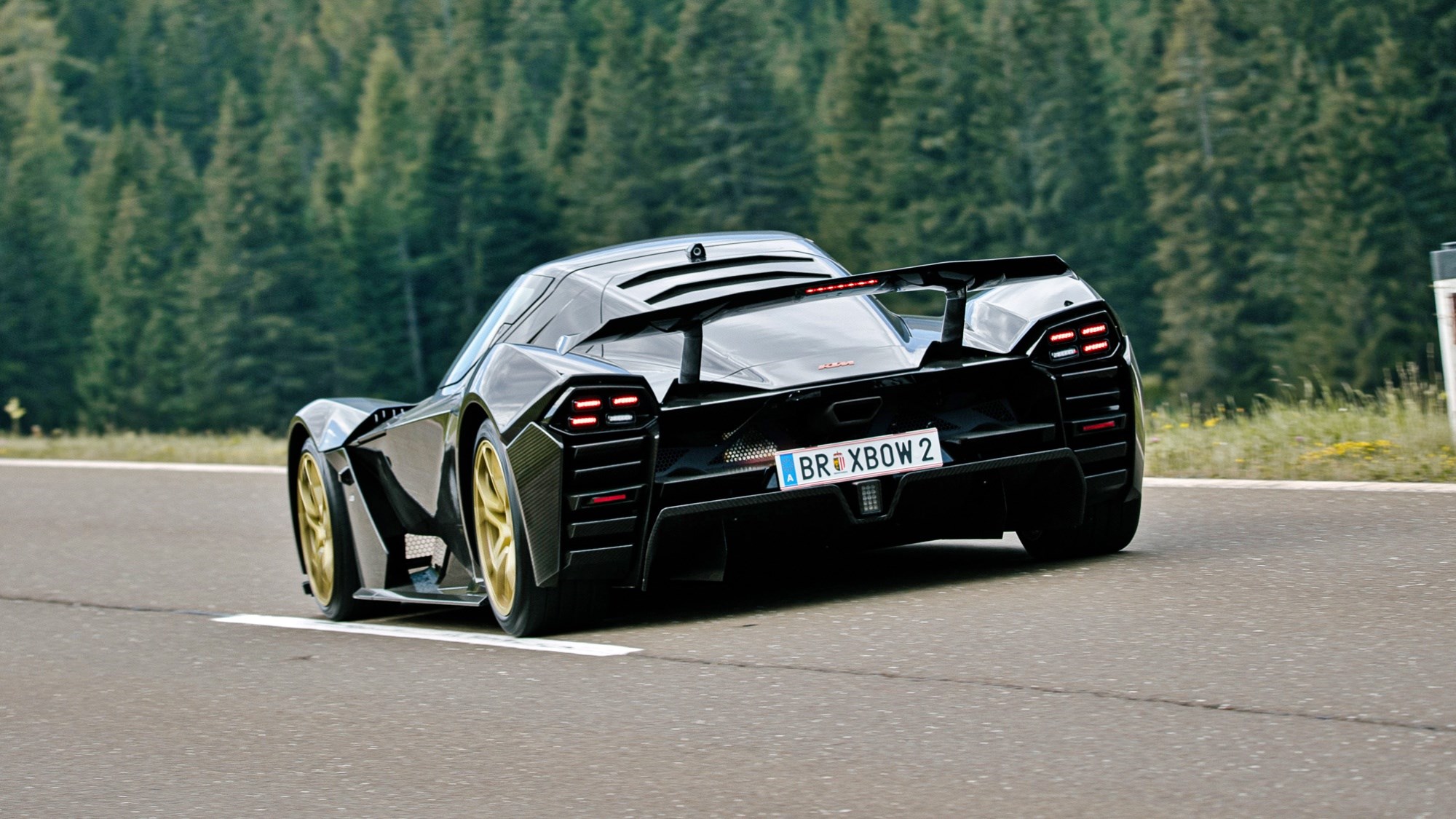
The engine’s note hardens as the big turbo hoovers up air just behind you. Release the throttle and you’re treated to a blow off noise a Group B car would be proud of; it’s almost as if you’re being hunted down by an S1 Quattro rally car at all times. Who needs six, eight, ten or even twelve cylinders when the noise is this addictive?
It certainly feels every bit as potent as the 3.5sec 0-62mph time suggests, although it’s missing on the never-ending acceleration feel provided by more powerful rivals from McLaren, Ferrari or Lamborghini. We also found the DSG box to be far too keen to change up in normal mode (thanks WLTP) and still slightly dim-witted in Sport mode. Manual mode is easily selected, but even there’s still a slight delay between the mechanical clack of the metal shift paddle and the next ratio smoothly slotting into place.
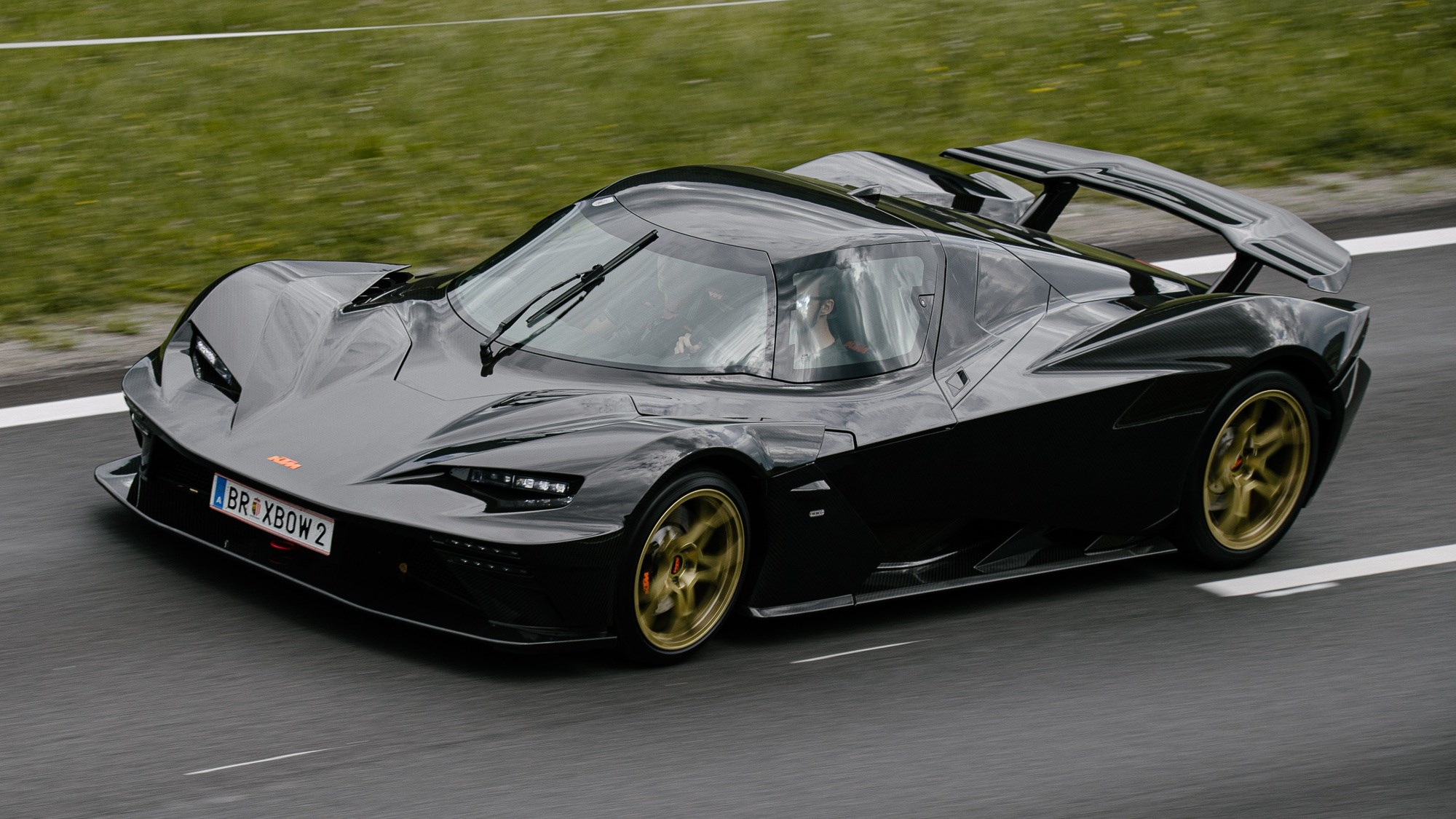
Similarly, the steering feels disconcertingly light and numb around the straight ahead. Release your grip, get a few degrees of lock on and you’ll start to get a whiff of feel, yet this is a system that requires plenty of input and cornering force before it truly comes alive. Thankfully KTM’s merry bunch of engineers are working on switchable weights for the progressive EPAS system (another Audi part) and were happy to receive feedback on improving things before customer cars are delivered.
The brakes feel totally juxtaposed to the overly assisted steering and refined nature of the gearbox. With no servo assistance, they require a firm shove during normal driving and a Herculean effort should you be in the mood for some spirited driving. The upshot is that the feel from the pedal inspires great confidence should your leg muscles be up to the task.
And its cornering capabilities?
You quickly realise the GT-XR is a car that only the certifiable will push on the road. There’s next to no slack in the suspension so turn in is immediate and agility astonishing, while mechanical grip is astoundingly good in the dry. A sudden shower reveals traction can be an issue, but the well-calibrated ESC gathers this up quickly and smoothly.
Following an ex-racing driver in an older X-Bow GT, it soon becomes clear my sense of self-preservation is the limiting factor here. Still, there is joy to be had in the precision of the chassis, immediacy of response and sheer theatre of the whole thing. Time to hit the track.
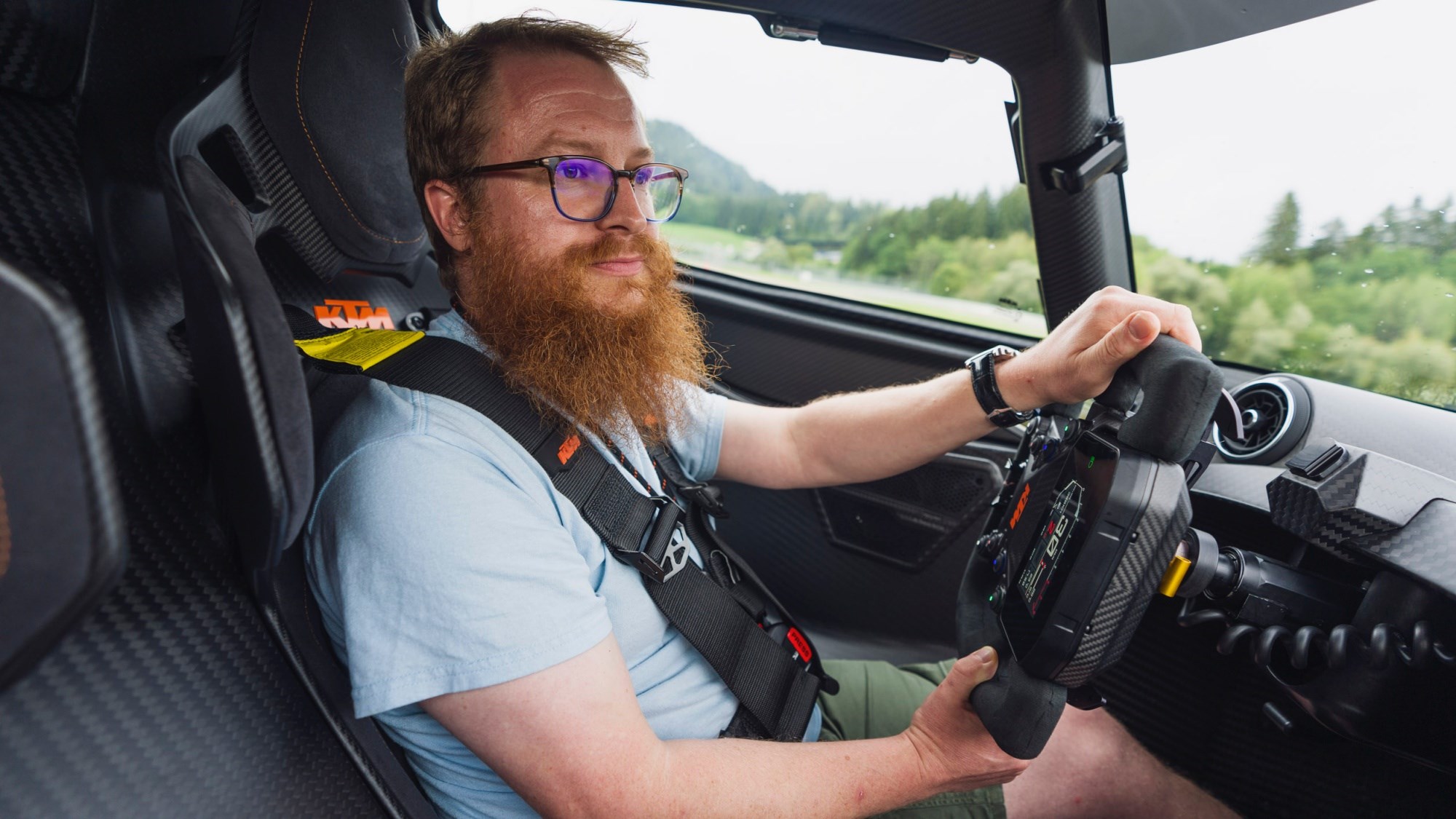
Once again we’re behind a dab hand, this time in the full-on GT2 car on which the GT-XR is based. As the pace increases I can start appreciating how truly astounding the brakes are, with my puny legs not once triggering the ABS as our braking distances grew ever shorter.
A slightly over-ambitious entry speed reveals my nervousness before the session was unfounded, the nose gently running wide before regaining purchase. Getting back on the power soon has me reaching for manual mode as the DSG box shifts at points that are less than desirable. Even in manual the car will upshift at the limiter, although the engineers explain the GT2 is exactly the same. After all, clattering into the limiter isn’t good for laptimes.
Before long we’re travelling as simply ludicrous speeds around bends, my neck starting to struggle to keep my head totally upright as feedback builds in the removable steering wheel. I’m getting braver now, trailbraking into a bend, feeling the nose tuck in satisfyingly and leaning on the immense traction. With the engine warbling and whooshing behind me, the 15-minute session is called to an end all too soon.
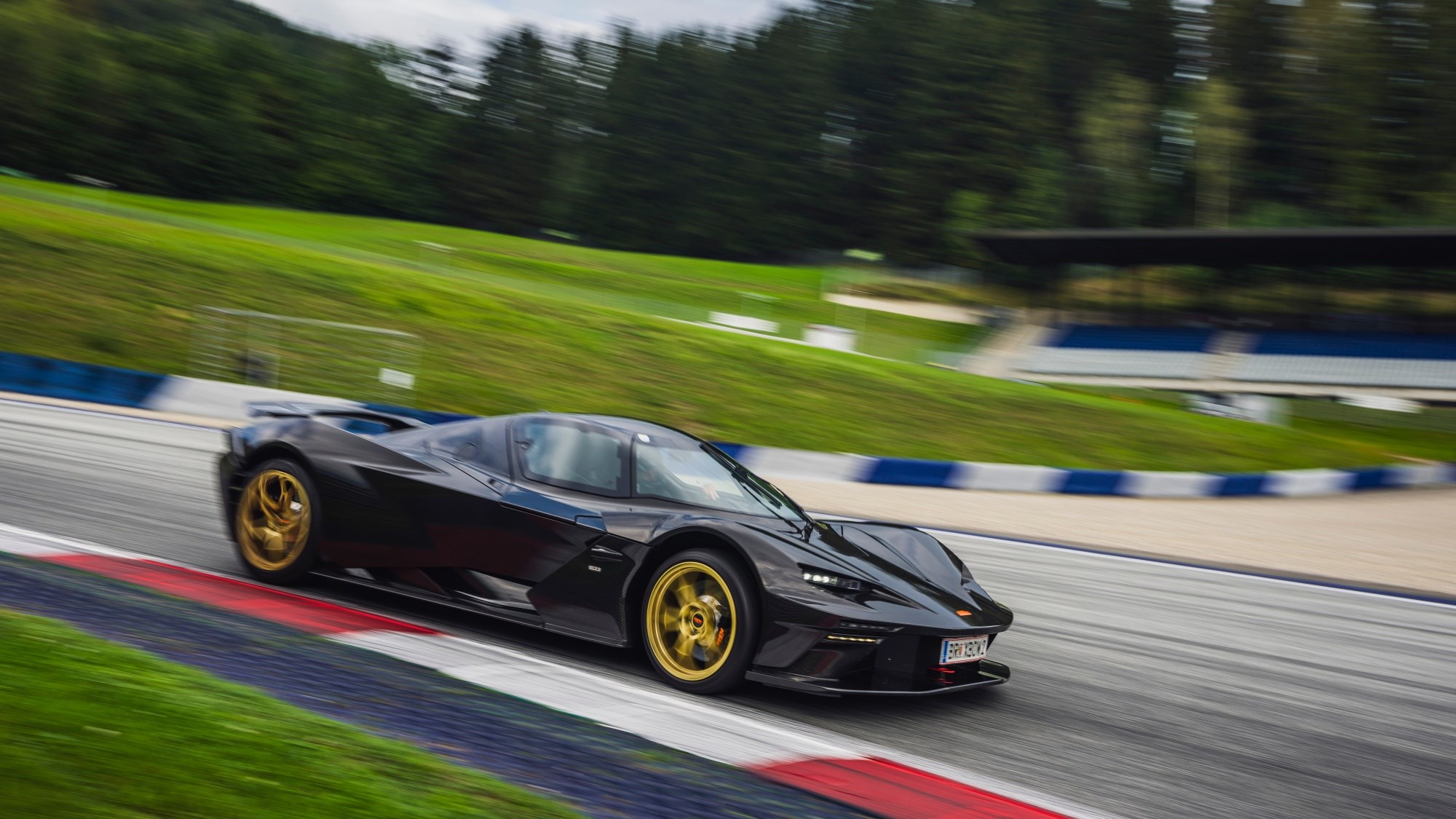
I’m exhausted, exhilarated and more than a little sweaty. Pulling back into the pit lane, the brakes feel just as strong as when we started and tyres seem unfazed. As I later find out, the GT-XR could have coped with another day of abuse on the same rubber and stoppers thanks to the weight and hasn’t had a single snifter of petrol.
Is that it?
Not quite. I knew there was no way I’d even scratch the surface of what was possible, so I blagged a ride alongside the GT2 pilot, now driving the GT-XR for photos. Despite apologising for having to slow for the snappers we’re soon lapping far faster, braking later and carrying even more speed through the bends.
Better known supercars might be quicker on the straights, but they’d have a far harder time keeping up in the bends. KTM will be heading to the Nordschleife with the GT-XR and expect it to turn a time beginning with a six.
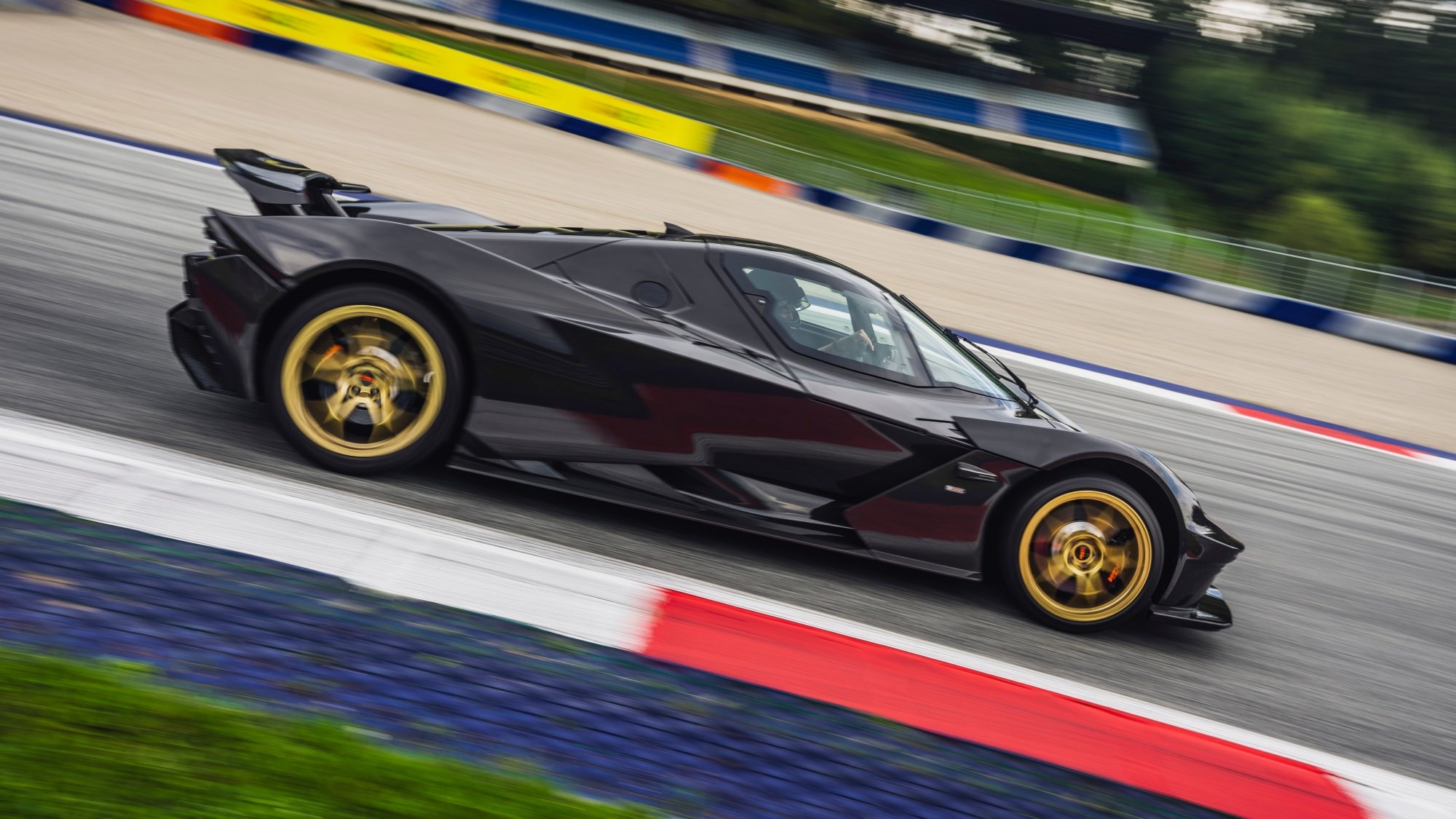
Still, the car doesn’t feel particularly snappy or look like hard work. The long 2.85m wheelbase and relatively light engine mean stability is the order of the day here, something that’s perfect for both endurance racing and for gentlemen drivers with more wallet than talent.
KTM X-Bow GT-XR Verdict
There’s no two ways about it, the GT-XR is a racing car first and foremost. Yes, you could technically stick a weekend’s worth of stuff in the boot and go away with your better half, but we probably wouldn’t advise it, not unless you wanted to sleep in the spare room for a few nights on your return.
Instead, think of it as something with plenty of room for overalls and a couple of helmets that you can drive rather than trailer to the track. Even better, you’ll almost certainly be able to drive home on the same tyres, brakes and possibly tank of fuel after destroying almost everything during the day – assuming you’ve got the skills.
It’s not perfect by any means, though. Hopefully the gearbox and steering calibration will receive some work before the first cars reach customers, and you’ll love or hate the brakes. A 911 GT3 makes more sense as a road and track toy and is a fair bit cheaper, too, but that’s beside the point.
For a start it wouldn’t see which way the KTM went and for seconds, the average GT-XR owner probably has one as well.